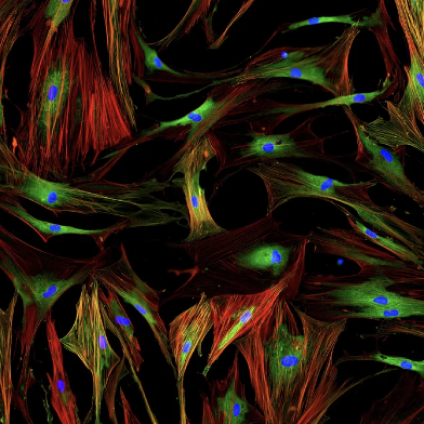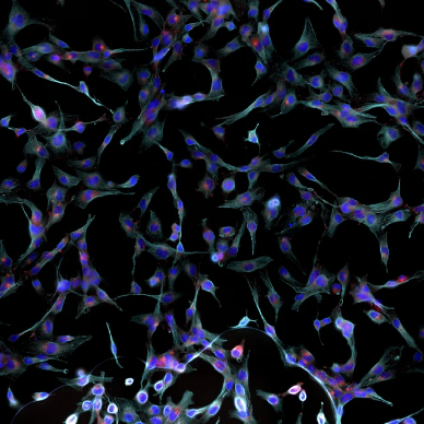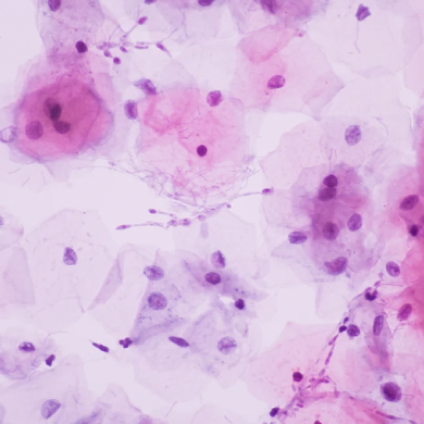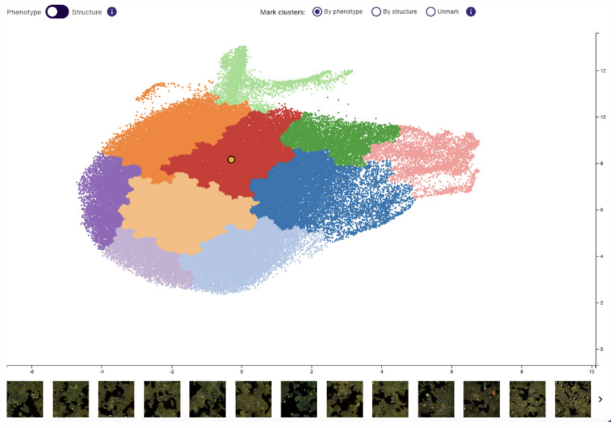JUMP-CP consortium
JUMP-CP Data Explorer Harness the power of phenotypic data
Explore the rich compound representation space of the dataset curated by the JUMP-Cell Painting Consortium with our intuitive JUMP-CP Data Explorer. Seamlessly integrated into the Ardigen phenAID technology platform, it empowers you to delve deeper into your phenotypic data and accelerate image-based drug discovery.
Unlock groundbreaking advancements in drug discovery with the JUMP-CP Data Explorer
Powered by a collaboration between esteemed organizations like the Broad Institute of MIT and Harvard along with leading pharmaceutical partners, JUMP-CP consortium is revolutionizing the landscape of scientific research by pooling resources to generate and share invaluable Cell Painting data.
Ardigen phenAID is a supporting partner of the JUMP-CP Consortium
The JUMP-CP Consortium’s aim is to validate and scale up image-based drug discovery strategies by creating the world’s largest public cell imaging dataset, corresponding to both genetic and chemical perturbations. Its members include 10 leading pharmaceutical companies (Amgen, AstraZeneca, Bayer, Biogen, Eisai, Janssen Pharmaceutica NV, Merck KGaA, Pfizer, Servier, and Takeda) and two non-profit research organizations, including the Broad Institute of MIT and Harvard and Ksilink. We are providing deep learning expertise to the consortium, leveraging a web application to facilitate the exploration of the JUMP-CP Cell Painting dataset and enhance Ai driven image analysis.
What is Cell Painting?
Cell Painting is not just microscopy—it’s a cutting-edge assay capable of unearthing nuanced variations in cell images linked to diseases, genetic alterations, or drug impacts. Dive into our vast database comprising over 140,000 samples, including a staggering array of 117,000 compounds, 13,000 overexpressed genes, and 8,000 genes manipulated via CRISPR-Cas9.
But we’re not just about data—we’re about insights. Our platform offers dual representations: structural and phenotypic. Toggle effortlessly between the two to delve deeper into the intricacies of chemical and genetic perturbations. Our Structural representation, driven by the Extended-Connectivity Fingerprint (ECFP) technique, unveils the molecular architecture of compounds with unparalleled clarity. Meanwhile, our Phenotypic representation harnesses CellProfiler features, providing a holistic view of biological responses for phenotypic profiling.



Ready to explore further?!
Our predictive power grows with each new label, and your contribution could propel us even further. Join us in expanding our JUMP-CP database and shaping the future of drug discovery.

Accelerate your research and identify better drug candidates with morphological profiling
Frequently Asked Questions
What is the JUMP-CP Consortium and its primary goal?
The JUMP-CP (Joint Undertaking for Morphological Profiling-Cell Painting) Consortium is a global, multi-institutional collaboration initiated by the Broad Institute with the goal of building the world’s largest open-access dataset of cellular images generated through the Cell Painting assay. Its mission is to enable image-based drug discovery by providing standardized, high-quality phenotypic data that can be used to identify compound bioactivity, modes of action, and potential off-target effects across a wide range of chemical and genetic perturbations. https://jump-cellpainting.broadinstitute.org/
What is the JUMP-CP Data Explorer and how does it work?
The JUMP-CP Data Explorer is a free interactive online platform developed to navigate, search, and visualize the massive image-based dataset produced by the consortium. It allows users to explore Cell Painting data by compound, gene perturbation, phenotypic cluster, or similarity to reference profiles. Researchers can query the dataset for morphological signatures, download image-derived features, and compare phenotypic effects across conditions and time points.
What is Cell Painting data and why is it important for drug discovery?
Cell Painting data consists of high-content images of cells stained with a combination of fluorescent dyes that label various organelles and cellular components. The analysis of these images extract thousands of single cell features generating unique morphological profiles that capture the phenotypic response of cells to chemical or genetic perturbations. In drug discovery, these profiles allow researchers to screen compounds in a target-agnostic manner, uncover novel modes of action, and prioritize hits based on functional similarity rather than chemical structure alone.
How can I access Cell Painting data?
The data generated by the JUMP-CP Consortium is publicly available and can be accessed via the Broad Institute’s JUMP hub providing access to GitHub repositories, and associated cloud-hosted data portals such as Ardigen phenAID JUMP-CP Data Explorer. Users can download raw images, extracted features, and metadata, or analyze data directly through cloud-integrated tools provided by the consortium.
How does Ardigen contribute to the JUMP-CP Consortium?
Ardigen is a contributing partner to the JUMP-CP Consortium, supporting the initiative through its expertise in AI, bioinformatics, and high-content image analysis. Ardigen develops tools for morphological profiling, phenotype clustering, and prediction of compound mode of action, and contributes to the interpretation and downstream utility of the public dataset in real-world drug discovery applications.
What are the applications of image-based screening
Image-based screening refers to the use of high-throughput microscopy to analyze cellular responses to genetic or chemical perturbations. Depending on the assay design, it can be used to observe morphological changes (as in Cell Painting) or to monitor the localization or abundance of specific proteins of interest using targeted stains or reporters.
Applications include hit identification, mode-of-action studies, compound clustering, toxicity assessment, and drug repurposing. While image-based screening does not necessarily require prior knowledge of molecular targets, it can also be applied in target-specific contexts.
It is one of several approaches used in phenotypic screening and is often combined with other methods as part of an integrated drug discovery strategy.
Who are the partners in the JUMP-CP Consortium?
The JUMP-CP Consortium includes leading academic institutions, pharmaceutical companies, biotech firms, and nonprofit research organizations. Founding members include the Broad Institute, Bayer, Roche, Merck, Pfizer, AstraZeneca, the Chan Zuckerberg Initiative, and others. Ardigen is part of this global collaboration, contributing to the scientific and technical development of the platform.
What types of data are available in the JUMP-CP public cell imaging dataset?
The public dataset includes raw cell images, morphological feature sets extracted using CellProfiler and other tools, compound metadata, perturbation annotations, and experimental context such as cell line, time point, and staining protocol. This multimodal data can be used for machine learning, phenotypic similarity analysis, and integrative biology research.
These AI solutions are overseen by experts like Dawid Rymarczyk, PhD. He is Director of AI Solutions at Ardigen. His expertise in deep learning and image analysis is crucial for developing these cutting-edge platforms.
See also:
Contact
Ready to transform drug discovery?
Discover how one of the top AI CROs in the world, can be your trusted partner in revolutionizing drug discovery through AI.
Contact us today to learn more about our tailored solutions for empowering your drug development journey.
Send us a message and we will contact you back within 48 hours.
Newsletter
Become an insider
Be the first to know about Ardigen’s latest news and get access to our publications, webinars and more!